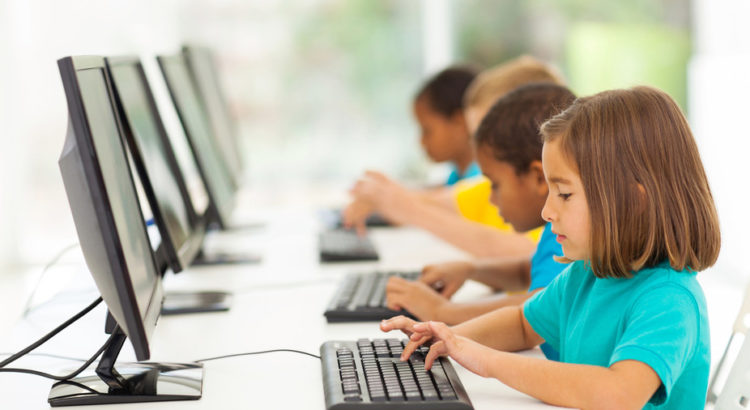Oceanía/Australia/Septiembre 2017/Noticias/https://theconversation.com/
Many parents are beginning to demand less technology use in the primary classroom due to the amount of screen time children have at home. This raises questions about whether technology in the classroom helps or hinders learning, and whether it should be used to teach maths.
Blaming the calculator for poor results
We often hear complaints that children have lost the ability to carry out simple computations because of the reliance on calculators in primary schools. This is not the case. In fact, there has been very little research conducted on the use of calculators in classrooms since the 80’s and 90’s because they are not a significant feature of primary school maths lessons. When calculators are used in primary classrooms, it’s usually to help children develop number sense, to investigate number patterns and relationships, or to check the accuracy of mental or written computation.
There is also evidence that children become more flexible in the way they compute through the use of calculators. It allows them to apply their knowledge of place value and other number related concepts rather than using a traditional algorithm.
The Australian Curriculum promotes a strong focus on the development of numeracy, including the development of estimation and mental computation. These are skills that children need in order to use calculators and other technologies efficiently.
The curriculum also promotes the thinking and doing of mathematics (referred to as “proficiencies”) rather than just the mechanics. There’s much more to mathematics than computation. That’s where more contemporary technologies can improve primary mathematics.
The importance of technology in learning maths
The use of digital technologies in the primary mathematics classroom is not an option. The Australian Curriculum and Reporting Authority (ACARA) has made it mandatory for teachers to incorporate technologies in all subject areas. Fortunately, schools have access to more powerful, affordable devices than ever before. Importantly, these are the same devices that many children already have access to at home, providing an opportunity to bridge the gap between the mathematics at school and their lives outside the classroom.
Literature around digital technologies and mathematics suggest new technologies have potentially changed teaching and learning, providing opportunities for a shift of focus from a traditional view to a more problem-solving approach. This notion is supported by research that claims the traditional view of mathematics that was focused on memorisation and rote learning is now replaced with one that has purpose and application.
When used well, technology can improve student engagement with mathematics and assists in improving their understanding of mathematical concepts.
In a recent research evaluation of the Matific digital resources, the findings were positive. The students found that they enjoyed using the digital resource on iPads and computers, and went from thinking about mathematics as something to be tolerated or endured to something that is fun to learn. An added bonus was that the children voluntarily started to use their screen time at home to do maths. Pre- and post-test data also indicated that the use of the technology contributed to improved mathematics results.
How technology is used in the classroom
Many would consider that the use of mobile devices in maths would consist of simple game playing. A search of the App Store reveals tens of thousands of supposedly educational maths games, creating a potential app trap for teachers who might spend hours searching through many low- quality apps. Although playing games can have benefits in terms of building fluency, they don’t usually help children learn new concepts. Luckily, there’s much that teachers can and are doing with technology.
The following are some of the different ways teachers are using technology:
– Show and tell apps, such as Explain Everything, EduCreations or ShowMe, allow students to show and explain the solution to a mathematical problem using voice and images
– Flipped learning, where teachers use the technology to replace traditional classroom instruction. YouTube videos or apps that provide an explanation of mathematical concepts are accessed by students anywhere and anytime
– Subscription based resource packages such as Matific which provide interactive, game-based learning activities, allow the teacher to set activities for individual students and keep track of student achievement
– Generic apps (camera, Google Earth, Google Maps, Geocaching) that allow students to explore mathematics outside the classroom.
Just as the world has changed, the mathematics classroom has also changed. Although technology is an integral part of our lives, it shouldn’t be the only resource used to teach maths. When it comes to technology in the classroom, it’s all about balance.
Fuente: https://theconversation.com/technology-in-the-classroom-can-improve-primary-mathematics-83431
Imagen: https://lh3.googleusercontent.com/zC29hrz-LrIHXUmfim9tMsf56LxDOBIMZ74P8Sk6aln892K-OUGl_zsTdUOkPU6vA7YKlXU=s85







 Users Today : 46
Users Today : 46 Total Users : 35459641
Total Users : 35459641 Views Today : 98
Views Today : 98 Total views : 3418070
Total views : 3418070